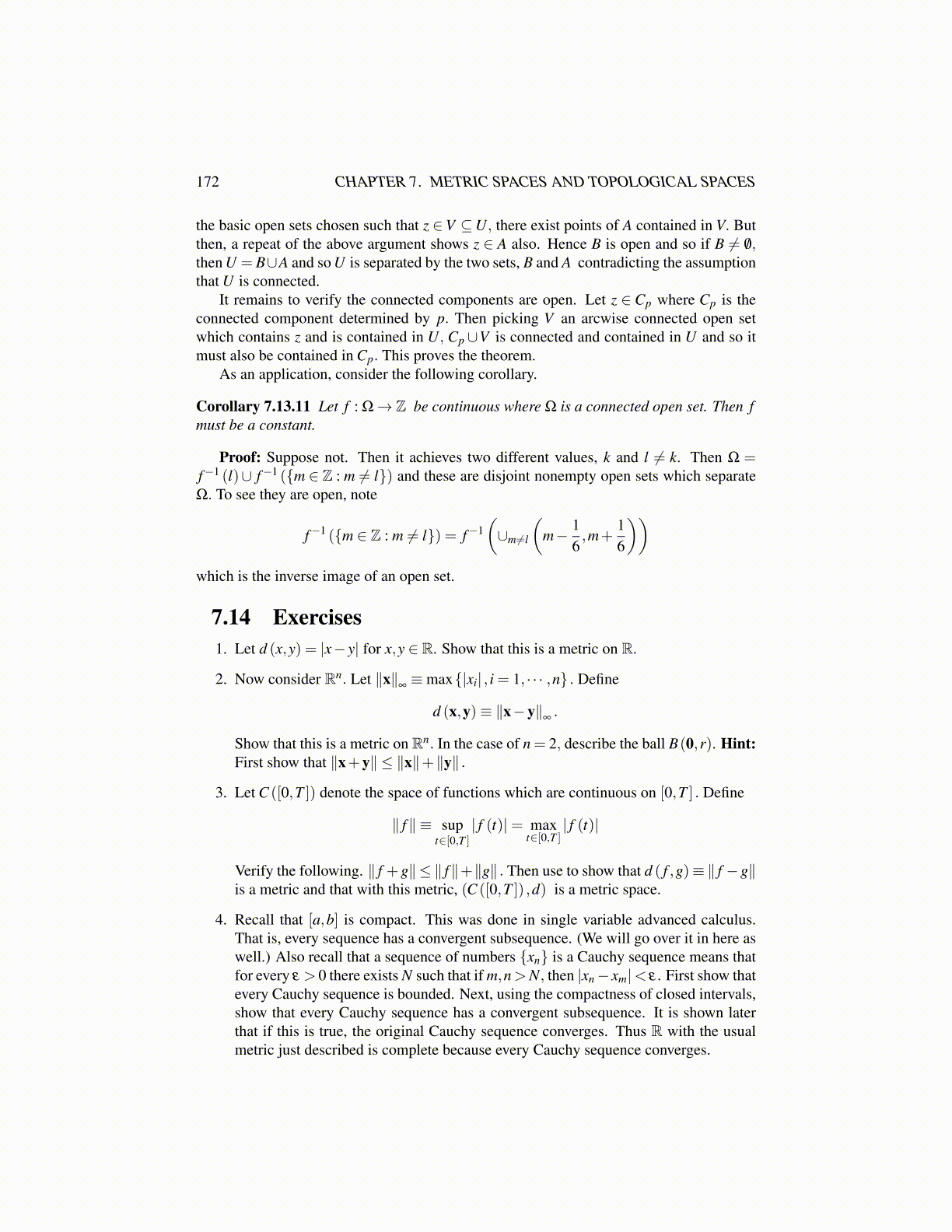
172 CHAPTER 7. METRIC SPACES AND TOPOLOGICAL SPACES
the basic open sets chosen such that z ∈V ⊆U, there exist points of A contained in V. Butthen, a repeat of the above argument shows z ∈ A also. Hence B is open and so if B ̸= /0,then U = B∪A and so U is separated by the two sets, B and A contradicting the assumptionthat U is connected.
It remains to verify the connected components are open. Let z ∈ Cp where Cp is theconnected component determined by p. Then picking V an arcwise connected open setwhich contains z and is contained in U, Cp ∪V is connected and contained in U and so itmust also be contained in Cp. This proves the theorem.
As an application, consider the following corollary.
Corollary 7.13.11 Let f : Ω→ Z be continuous where Ω is a connected open set. Then fmust be a constant.
Proof: Suppose not. Then it achieves two different values, k and l ̸= k. Then Ω =f−1 (l)∪ f−1 ({m ∈ Z : m ̸= l}) and these are disjoint nonempty open sets which separateΩ. To see they are open, note
f−1 ({m ∈ Z : m ̸= l}) = f−1(∪m ̸=l
(m− 1
6,m+
16
))which is the inverse image of an open set.
7.14 Exercises1. Let d (x,y) = |x− y| for x,y ∈ R. Show that this is a metric on R.
2. Now consider Rn. Let ∥x∥∞≡max{|xi| , i = 1, · · · ,n} . Define
d (x,y)≡ ∥x−y∥∞.
Show that this is a metric on Rn. In the case of n = 2, describe the ball B(0,r). Hint:First show that ∥x+y∥ ≤ ∥x∥+∥y∥ .
3. Let C ([0,T ]) denote the space of functions which are continuous on [0,T ] . Define
∥ f∥ ≡ supt∈[0,T ]
| f (t)|= maxt∈[0,T ]
| f (t)|
Verify the following. ∥ f +g∥ ≤ ∥ f∥+∥g∥ . Then use to show that d ( f ,g)≡ ∥ f −g∥is a metric and that with this metric, (C ([0,T ]) ,d) is a metric space.
4. Recall that [a,b] is compact. This was done in single variable advanced calculus.That is, every sequence has a convergent subsequence. (We will go over it in here aswell.) Also recall that a sequence of numbers {xn} is a Cauchy sequence means thatfor every ε > 0 there exists N such that if m,n>N, then |xn− xm|< ε . First show thatevery Cauchy sequence is bounded. Next, using the compactness of closed intervals,show that every Cauchy sequence has a convergent subsequence. It is shown laterthat if this is true, the original Cauchy sequence converges. Thus R with the usualmetric just described is complete because every Cauchy sequence converges.